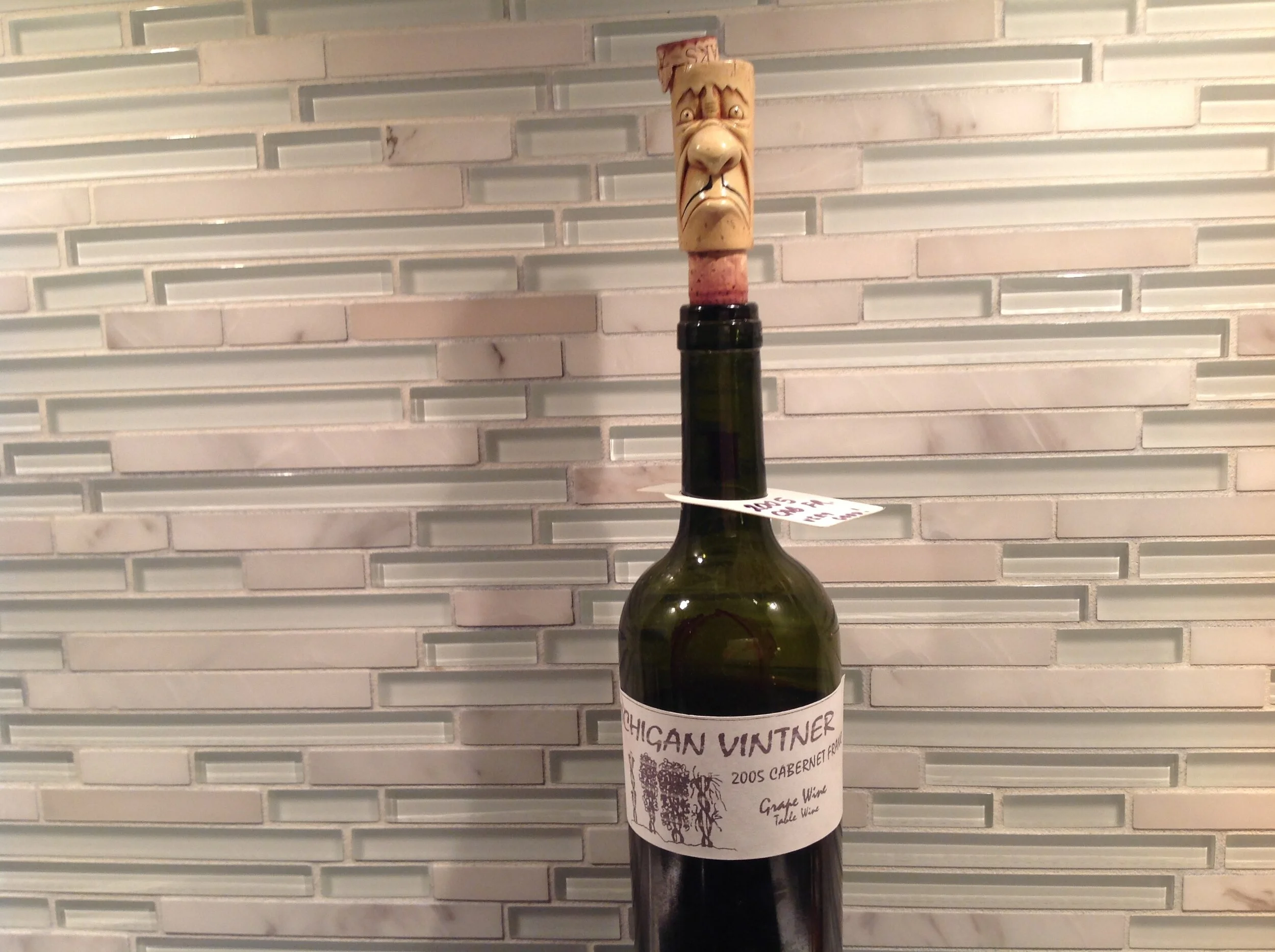Decanting is Essential to Enjoy Older Wines

Decanting is Essential to Enjoy Older Wines
Myth #1
Wine with sediment and chemise (stains on the glass) is probably spoiled or at least past its prime.
Myth #2
Clear wine and cloudy wine taste the same, they just look different.
Myth #3
Pouring wine through a coffee filter, cheese cloth or other fine mesh is the same as decanting.
Myth #4
If the cork looks rotten and falls apart, the wine must be flawed.
The whole purpose of cellaring wine is to allow it to gain purity of aroma and clarity of flavor. When wines are young, the flavors are so dominated with aggressive fruit and hard tannin that fine subtleties and nuances unique to a specific wine made on a specific site in a specific year are very hard to discern even for trained wine experts. This is not to say that big muscular young wines are not as good as old elegant wines, but they are certainly different; the former being more of a hedonistic pleasure, and the latter more cerebral.
Assume that any wine which has set undisturbed for a few years will throw sediment. Any wine which has not been fine filtered at the winery will develop chemise over time. Any red wine which is more than five years old will probably have some level of both. Older wines, red or white, need to be decanted not only to separate the sediment and chemise from the wine, but, also to aerate it and allow the bottle stink to blow off. All wine, red or white, will eventually throw sediment no matter how much it was allowed to settle or how finely it was filtered prior to bottling. So, when you see sediment in a bottle, THAT IS A GOOD SIGN not a flaw. Sediment indicates that the wine has or is developing mature characteristics. Some wines which have been bulk aged for decades (such as some Spanish wines and non-vintage ports) will throw very little sediment during their useful life, so, don’t wait forever to open up your cherished Rioja Gran Reserva, LBV or Reserve Port.
Never ever attempt to serve a bottle of wine that has a lot of sediment without decanting it first. You might get lucky and serve maybe one or two nice glasses of wine, but, the majority of the wine you serve will taste and smell like swampy mud if you fail to decant it. Pour it through a coffee filter or cheese cloth and ALL of the wine will taste like swampy mud; not a pleasant fate for your most cherished well-cellared bottles.
If your wine is stored cork down, you must give it a mild shake and stand it up or on its side slightly cork up for at least a month prior to opening it. Ideally, store your wine on its side so that you can carefully open and decant it on a moment’s notice. With older wines, say 10 years or older, I will bring the wine from the cellar and rest it in some sort of decanting basket. In my kitchen, the vegetable drainer in the sink snugly holds a bottle nicely at a 45 degree angle. Cut off the top of the foil and clean off the top of the bottle without shaking or disturbing the contents. Then insert an AH-SO style cork puller. Most corks over ten years old are very crumbly and will usually break when using a corkscrew. Sometimes, even an AH-SO cork puller will push the cork in a bit. Just be patient and gradually slide the tines into the bottle while twisting and then pulling. If it breaks apart, try to mine what you can out of the bottle with a corkscrew and then decant it through a small sieve or other device that will not get in the way or block your view of the bottle neck when decanting. Again, at all times, be careful not to shake or disturb the contents.
Once the cork has been pulled or mined from the bottle stand a very bright flashlight or candle if the room is sufficiently dark up next to the decanter. Pour the wine into a decanter very slowly (through a sieve placed on top of the decanter if the wine is full of cork bits) gurgling it as little as possible. As you pour, look through the bottle neck and shoulder at the flashlight or candle so that you can easily see the clear wine flowing through the neck of the bottle. As soon as the sediment reaches the shoulder, really slow down the pouring so the wine is just barely trickling out. When the sediment starts to reach the neck of the bottle, stop pouring and dump the remaining wine/sediment mixture down the drain. This should be no more than a few ounces if you’ve been careful not to shake or disturb the wine.
Now, you can serve the wine directly from the decanter or, if you are going to serve several bottles, you can rinse out the bottle well and, with a funnel, pour the wine back into the bottle. This is called “double decanting”. With Cabernet/Merlot based wines, I think they benefit from the additional aeration. With most Pinot Noir based wines I think double decanting can over do a good thing and some of the subtleties get lost.
Either way, notice how brilliantly vivid even the most subtle elements of bouquet and texture have become. Whether you prefer old wine or young wine is purely a matter of taste though it is hard not to enjoy and respect older wines for no other reason than that they are old.
If you are into gadgets, several wine paraphernalia outlets sell a device known as a decanting machine. It will assist with everything I’ve outlined above for those with not-so-steady hands.
Enjoy in Good Health,
Brian Cain, the Michigan Vintner




